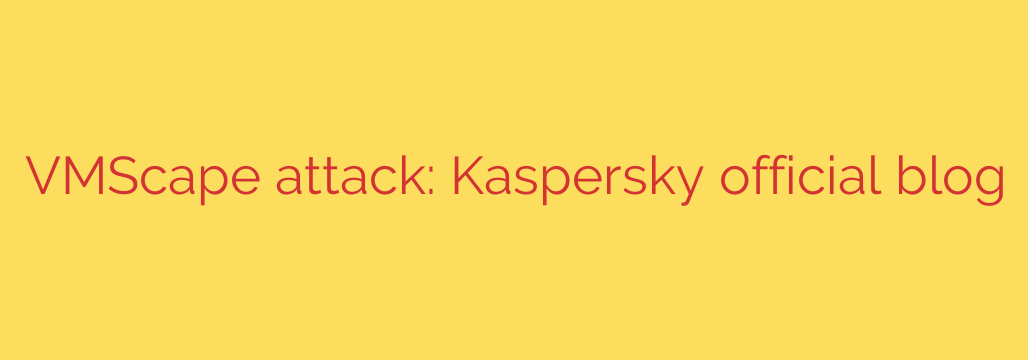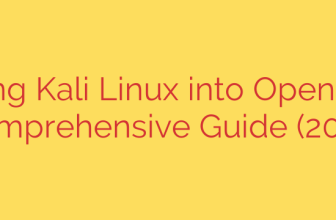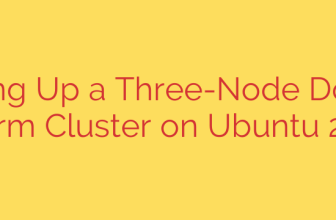
The VMScape Attack: A New Threat That Breaks Out of Virtual Machines
Virtualization is a cornerstone of modern IT, allowing businesses to run multiple isolated operating systems on a single physical server. This isolation is the bedrock of its security model. But what happens when that bedrock cracks? A sophisticated new attack, dubbed VMScape, demonstrates a critical threat: the ability for malware to “escape” a virtual machine (VM) and gain control of the underlying host server.
This type of attack, known as a guest-to-host escape, is a nightmare scenario for cybersecurity professionals. If an attacker can break out of the sandboxed environment of a guest VM, they can potentially access and control all other VMs on the same hardware, eavesdrop on network traffic, and compromise the entire infrastructure. The VMScape attack is a real-world example of this theory put into practice by highly skilled threat actors.
How the VMScape Attack Works
The attack exploits a specific, high-severity vulnerability tracked as CVE-2024-21325. This flaw exists within a component related to remote desktop services in a popular virtualization platform. The attackers leverage this vulnerability in a multi-stage process to achieve their goal.
- Initial Compromise: The attack begins with the infection of a single guest VM. This initial entry could happen through various methods, such as a phishing email, a software vulnerability, or a compromised credential.
- Exploiting the Vulnerability: Once inside the guest VM, the malware triggers the CVE-2024-21325 vulnerability. This allows the attacker to execute malicious code outside the confines of the virtual machine, directly on the hypervisor—the software that manages all the VMs.
- Deploying the Backdoor: After successfully escaping, the attackers deploy a sophisticated backdoor, which researchers have named “Durian.” This backdoor establishes a persistent channel of communication with the attacker’s command-and-control server.
With the Durian backdoor installed on the host machine, the attackers gain complete and persistent control. They can steal sensitive data, deploy further malware, and move laterally across the network, all while remaining incredibly difficult to detect.
Who is At Risk?
Analysis suggests that the VMScape attack is not a widespread, opportunistic campaign. Instead, it is a highly targeted operation conducted by a well-resourced Advanced Persistent Threat (APT) group. The primary targets identified so far include research organizations, particularly those involved in the cryptocurrency and blockchain sectors.
This indicates the attackers’ motives are likely centered on cyber espionage, intellectual property theft, or high-value financial gain. The level of sophistication involved points to a state-sponsored or similarly advanced actor with the resources to discover and weaponize a complex, zero-day vulnerability.
How to Protect Your Virtualized Environments
While VMScape is a targeted and advanced threat, its existence is a critical reminder of the need for a defense-in-depth security strategy for all virtualized infrastructure. Organizations should take the following steps to mitigate the risk of a VM escape attack:
- Patch Immediately: The single most important defense is to apply the security patches that address CVE-2024-21325. Ensure your virtualization host software is always up-to-date with the latest security updates from the vendor.
- Enhance Endpoint Security: Protect the guest VMs themselves. A strong Endpoint Detection and Response (EDR) solution can often detect the initial stages of a compromise before it can escalate to a hypervisor attack.
- Monitor Host and Network Activity: Implement robust monitoring for the hypervisor itself. Look for unusual processes, unexpected network connections, or any anomalous activity originating from the host system. Network segmentation can also help contain a breach by limiting an attacker’s ability to move laterally.
- Employ the Principle of Least Privilege: Ensure that guest VMs only have the permissions and access they absolutely need to function. Over-privileged accounts and services create a larger attack surface.
- Conduct Regular Security Audits: Proactively hunt for vulnerabilities and misconfigurations in your virtual environment. Assume that a breach is possible and continuously work to strengthen your defenses.
The emergence of the VMScape attack underscores a critical evolution in the threat landscape. As organizations rely more heavily on virtualization, attackers are dedicating more resources to breaking its fundamental security promises. Staying vigilant, patching promptly, and implementing a multi-layered security approach are essential to protecting your critical infrastructure from this new class of advanced threats.
Source: https://www.kaspersky.com/blog/vmscape-spectre-attack/54377/








